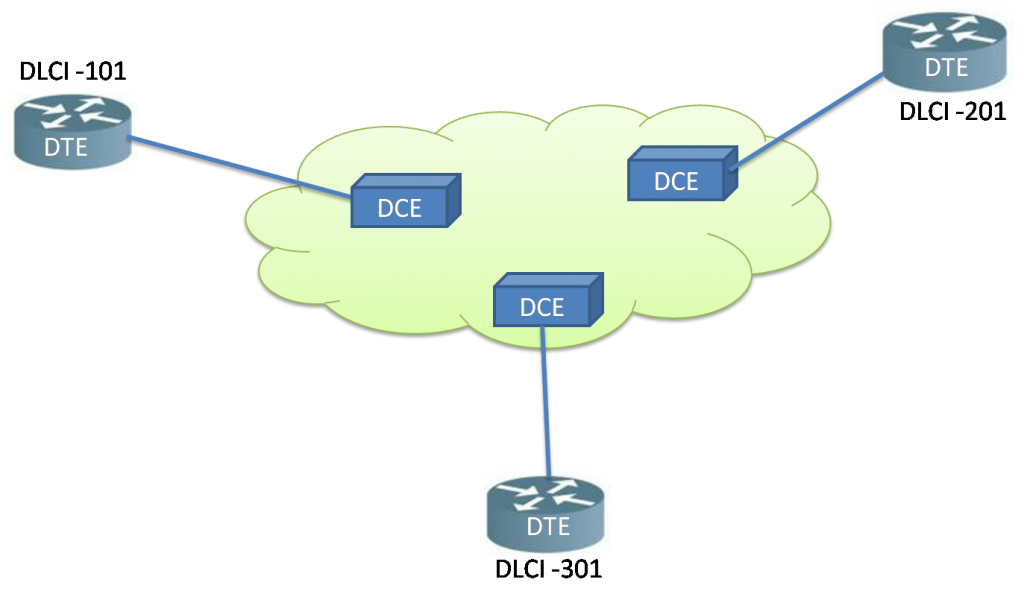We have already discussed Frame Relay in the previous lessons. What is Frame Relay? Exclusive Introduction that it provides connection-oriented data link layer communication using a Frame Relay virtual circuit. Frame Relay Virtual Circuits (VCs) are a logical connection between two data terminal equipment (DTE) devices across a Frame Relay packet-switched network (PSN). The circuits are virtual because there is no direct electrical connection from one side to another side.
The connection is logical, and data moves from end to end without a direct electrical circuit. With Virtual Circuits (VCs), Frame Relay shares the bandwidth among multiple users, and any single site can communicate with any other single site without using multiple dedicated physical lines.
Bidirectional communication is possible on a single physical line due to the data-link connection identifier (DLCI). Using DLCI, several virtual circuits can be multiplexed into a single physical circuit for transmission across the network. There are two types of VCs:
- Switched Virtual Circuits (SVC): A switched virtual circuit (SVC) provides a temporary connection between two different network nodes until a data transfer session is completed, after which the connection is terminated. Svc has different states e.g. CALL SETUP, DATA TRANSFER, IDLE, and CALL TERMINATION.
- Permanent Virtual Circuits (PVCs): A permanent virtual circuit (PVC) provides the user with a dedicated virtual circuit. Still, this permanent virtual circuit ( PVC) is part of a shared pool of circuit resources that support multiple users as they require the connections. PVCs are more commonly implemented than SVCs.
Frame Relay creates a Virtual Circuit by storing input-port to output-port mapping in the memory of each switch and thus links one switch to another until a continuous path from one end of the circuit to the other is identified. A Virtual Circuit can pass through any intermediate devices (switches) within the Frame Relay network.
Virtual Circuits (VCs) provide a bidirectional communication path from one device to another. VCs are known by DLCIs, as shown in Figure 1. Due to its local implication, the DLCI value is not unique in the Frame relay network. A DLCI identifies a VC to the equipment at an endpoint. So, a DLCI has no significance further than the single link. Devices connected by a VC may use a different DLCI value to refer to the same connection.

As we know, DLCIs are locally significant, so the same address can be used in several locations while referring to different connections. Local addressing also prevents customers from running out of DLCIs as the network grows.
In Frame Relay Network, the frames moves across the network, Frame Relay labels each VC with a DLCI number. The DLCI number is stored in the address field of every frame transmitted to tell the network how the frame should be routed. Usually, DLCIs 0 to 15 and 1,008 to 1,023 are reserved. So, the Frame Relay service providers typically assign DLCIs from 16 to 1,007.




